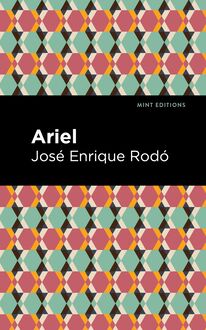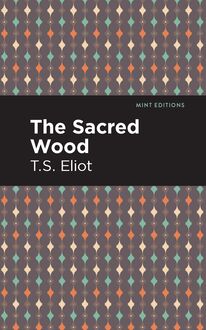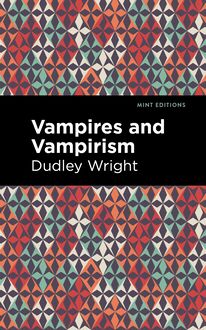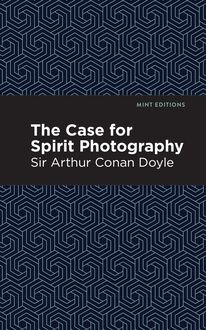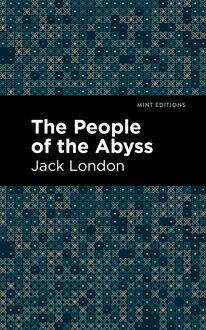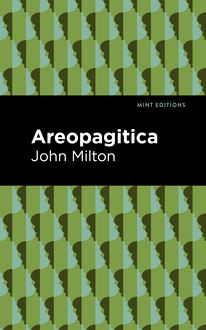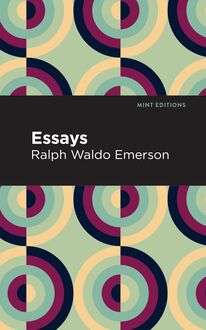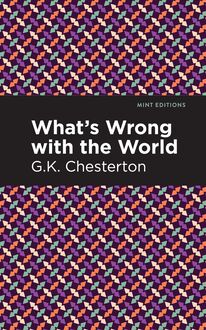-
 Univers
Univers
-
 Ebooks
Ebooks
-
 Livres audio
Livres audio
-
 Presse
Presse
-
 Podcasts
Podcasts
-
 BD
BD
-
 Documents
Documents
-
- Cours
- Révisions
- Ressources pédagogiques
- Sciences de l’éducation
- Manuels scolaires
- Langues
- Travaux de classe
- Annales de BEP
- Etudes supérieures
- Maternelle et primaire
- Fiches de lecture
- Orientation scolaire
- Méthodologie
- Corrigés de devoir
- Annales d’examens et concours
- Annales du bac
- Annales du brevet
- Rapports de stage
La lecture à portée de main
Vous pourrez modifier la taille du texte de cet ouvrage
Découvre YouScribe en t'inscrivant gratuitement
Je m'inscrisDécouvre YouScribe en t'inscrivant gratuitement
Je m'inscrisEn savoir plus
Vous pourrez modifier la taille du texte de cet ouvrage
En savoir plus

Description
The Woman’s Bible (1895-1898) is a work of religious and political nonfiction by American women’s rights activist Elizabeth Cady Stanton. Despite its popular success, The Woman’s Bible caused a rift in the movement between Stanton and her supporters and those who believed that to wade into religious waters would hurt the suffragist cause. Reactions from the press, political establishment, and much of the reading public were overwhelmingly negative, accusing Stanton of blasphemy and sacrilege while refusing to engage with the book’s message: to reconsider the historical reception of the Bible in order to make room for women to be afforded equality in their private and public lives.
Working with a Revising Committee of 26 members of the National American Woman Suffrage Association, Stanton sought to provide an updated commentary on the Bible that would highlight passages allowing for an interpretation of scripture harmonious with the cause of the women’s rights movement. Inspired by activist and Quaker Lucretia Mott’s use of Bible verses to dispel the arguments of bigots opposed to women’s rights and abolition, Stanton hoped to establish a new way of framing the history and religious representation of women that could resist similar arguments that held up the Bible as precedent for the continued oppression of women. Starting with an interpretation of the Genesis story of Adam and Eve, Stanton attempts to show where men and women are treated as equals in the Bible, eventually working through both the Old and New Testaments. In its day, The Woman’s Bible was a radically important revisioning of women’s place in scripture that Stanton and her collaborators hoped would open the door for women to obtain the rights they had long been systematically denied.
With a beautifully designed cover and professionally typeset manuscript, this edition of Elizabeth Cady Stanton’s The Woman’s Bible is a classic of American literature reimagined for modern readers.
Sujets
Informations
| Publié par | Mint Editions |
| Date de parution | 01 février 2021 |
| Nombre de lectures | 0 |
| EAN13 | 9781513275970 |
| Langue | English |
| Poids de l'ouvrage | 2 Mo |
Informations légales : prix de location à la page 0,0500€. Cette information est donnée uniquement à titre indicatif conformément à la législation en vigueur.
Extrait
The Woman’s Bible
Elizabeth Cady Stanton
The Woman’s Bible was first published in 1895.
This edition published by Mint Editions 2020.
ISBN 9781513270975 | E-ISBN 9781513275970
Published by Mint Editions®
minteditionbooks .com
Publishing Director: Jennifer Newens
Design & Production: Rachel Lopez Metzger
Project Manager: Micaela Clark
Typesetting: Westchester Publishing Services
C ONTENTS T HE B OOK OF G ENESIS T HE B OOK OF E XODUS T HE B OOK OF L EVITICUS T HE B OOK OF N UMBERS T HE B OOK OF D EUTERONOMY T HE B OOK OF J OSHUA T HE B OOK OF J UDGES T HE B OOK OF R UTH B OOKS OF S AMUEL B OOKS OF K INGS T HE B OOK OF E STHER T HE B OOK OF J OB B OOKS OF P SALMS, P ROVERBS, E CCLESIASTES AND THE S ONG OF S OLOMON B OOKS OF I SAIAH AND D ANIEL, M ICAH AND M ALACHI T HE K ABBALAH T HE N EW T ESTAMENT T HE B OOK OF M ATTHEW T HE B OOK OF M ARK T HE B OOK OF L UKE T HE B OOK OF J OHN T HE B OOK OF A CTS E PISTLE TO THE R OMANS E PISTLES TO THE C ORINTHIANS E PISTLES TO THE E PHESIANS AND P HILLIPPIANS E PISTLES TO T IMOTHY E PISTLES OF P ETER AND J OHN R EVELATION A PPENDIX “ T HE W OMAN’S B IBLE” R EPUDIATED
THE BOOK OF GENESIS
I
Genesis i: 26, 27, 28
26 And God said, Let us make man in our image after our likeness: and let them have dominion over the fish of the sea, and over the fowl of the air, and over the cattle, and over all the earth, and over every creeping thing that creepeth upon the earth
27 So God created man in his own image, in the image of God created he him: male and female image, created he them.
28 And God blessed them, and God said unto them, Be fruitful, and multiply, and replenish the earth, and subdue it; and have dominion over the fish of the sea, and over the fowl of the air, and over every living thing that moveth upon the earth.
Here is the sacred historian’s first account of the advent of woman; a simultaneous creation of both sexes, in the image of God. It is evident from the language that there was consultation in the Godhead, and that the masculine and feminine elements were equally represented. Scott in his commentaries says, “this consultation of the Gods is the origin of the doctrine of the trinity.” But instead of three male personages, as generally represented, a Heavenly Father, Mother, and Son would seem more rational.
The first step in the elevation of woman to her true position, as an equal factor in human progress, is the cultivation of the religious sentiment in regard to her dignity and equality, the recognition by the rising generation of an ideal Heavenly Mother, to whom their prayers should be addressed, as well as to a Father.
If language has any meaning, we have in these texts a plain declaration of the existence of the feminine element in the Godhead, equal in power and glory with the masculine. The Heavenly Mother and Father! “God created man in his own image, male and female.” Thus Scripture, as well as science and philosophy, declares the eternity and equality of sex—the philosophical fact, without which there could have been no perpetuation of creation, no growth or development in the animal, vegetable, or mineral kingdoms, no awakening nor progressing in the world of thought. The masculine and feminine elements, exactly equal and balancing each other, are as essential to the maintenance of the equilibrium of the universe as positive and negative electricity, the centripetal and centrifugal forces, the laws of attraction which bind together all we know of this planet whereon we dwell and of the system in which we revolve.
In the great work of creation the crowning glory was realized, when man and woman were evolved on the sixth day, the masculine and feminine forces in the image of God, that must have existed eternally, in all forms of matter and mind. All the persons in the Godhead are represented in the Elohim the divine plurality taking counsel in regard to this last and highest form of life. Who were the members of this high council, and were they a duality or a trinity? Verse 27 declares the image of God male and female. How then is it possible to make woman an afterthought? We find in verses 5-16 the pronoun “he” used. Should it not in harmony with verse 26 be “they,” a dual pronoun? We may attribute this to the same cause as the use of “his” in verse 11 instead of “it.” The fruit tree yielding fruit after “his” kind instead of after “its” kind. The paucity of a language may give rise to many misunderstandings.
The above texts plainly show the simultaneous creation of man and woman, and their equal importance in the development of the race. All those theories based on the assumption that man was prior in the creation, have no foundation in Scripture.
As to woman’s subjection, on which both the canon and the civil law delight to dwell, it is important to note that equal dominion is given to woman over every living thing, but not one word is said giving man dominion over woman.
Here is the first title deed to this green earth giving alike to the sons and daughters of God. No lesson of woman’s subjection can be fairly drawn from the first chapter of the Old Testament.
E. C. S.
The most important thing for a woman to note, in reading Genesis, is that that portion which is now divided into “the first three chapters” (there was no such division until about five centuries ago), contains two entirely separate, and very contradictory, stories of creation, written by two different, but equally anonymous, authors. No Christian theologian of to-day, with any pretensions to scholarship, claims that Genesis was written by Moses. As was long ago pointed out, the Bible itself declares that all the books the Jews originally possessed were burned in the destruction of Jerusalem, about 588 B.C ., at the time the people were taken to Babylonia as slaves too the Assyrians, (see II Esdras, ch. xiv, V. 21, Apocrypha). Not until about 247 B.C . (some theologians say 226 and others; 169 B.C .) is there any record of a collection of literature in the re-built Jerusalem, and, then, the anonymous writer of II Maccabees briefly mentions that some Nehemiah “gathered together the acts of the kings and the prophets and those of David” when “founding a library” for use in Jerusalem. But the earliest mention anywhere in the Bible of a book that might have corresponded to Genesis is made by an apocryphal writer, who says that Ezra wrote “all that hath been done in the world since the beginning,” after the Jews returned from Babylon, under his leadership, about 450 B.C . (see II Esdras, ch. xiv, v. 22, of the Apocrypha).
When it is remembered that the Jewish books were written on rolls of leather, without much attention to vowel points and with no division into verses or chapters, by uncritical copyists, who altered passages greatly, and did not always even pretend to understand what they were copying, then the reader of Genesis begins to put herself in position to understand how it can be contradictory. Great as were the liberties which the Jews took with Genesis, those of the English translators, however, greatly surpassed them.
The first chapter of Genesis, for instance, in Hebrew, tells us, in verses one and two, “As to origin, created the gods (Elohim) these skies (or air or clouds) and this earth… And a wind moved upon the face of the waters.” Here we have the opening of a polytheistic fable of creation, but, so strongly convinced were the English translators that the ancient Hebrews must have been originally monotheistic that they rendered the above, as follows: “In the beginning God created the heaven and the earth… And the spirit of God (!) moved upon the face of the waters.”
It is now generally conceded that some one (nobody pretends to know who) at some time (nobody pretends to know exactly when), copied two creation myths on the same leather roll, one immediately following the other. About one hundred years ago, it was discovered by Dr. Astruc, of France, that from Genesis ch. i, v. 1 to Genesis ch. ii, v. 4, is given one complete account of creation, by an author who always used the term “the gods” (Elohim), in speaking of the fashioning of the universe, mentioning it altogether thirty-four times, while, in Genesis ch. ii, v. 4, to the end of chapter iii, we have a totally different narrative, by an author of unmistakably different style, who uses the term “Iahveh of the gods” twenty times, but “Elohim” only three times. The first author, evidently, attributes creation to a council of gods, acting in concert, and seems never to have heard of Iahveh. The second attributes creation to Iahveh, a tribal god of ancient Israel, but represents Iahveh as one of two or more gods, conferring with them (in Genesis ch. xiii, V. 22) as to the danger of man’s acquiring immortality.
Modern theologians have, for convenience sake, entitled these two fables, respectively, the Elohistic and the Iahoistic stories. They differ, not only in the point I have mentioned above, but in the order of the “creative acts;” in regard to the mutual attitude of man and woman, and in regard to human freedom from prohibitions imposed by deity. In order to exhibit their striking contradictions, I will place them in parallel columns:
E LOHISTIC.— I AHOISTIC.
Order of Creation:
Order of Creation:
First—Water.
First—Land.
Second—Land
Second—Water.
Third—Vegetation.
Third—Male Man, only.
Fourth—Animals.
Fourth—Vegetation.
Fifth—Mankind; male and female.
Fifth—Animals.
Sixth—Woman.
In this story male and female man are created simultaneously, both alike, in the image of the gods, after animals have been called into existence.—In this story male man is sculptured out of clay, before any animals are created, and before female man has been constructed.
Here, joint dominion over the earth is given to woman and man, without limit or prohibition.—Here, woman is punished with subjection to man for breaking a prohibitory law.
Everything, without exception, is pr
-
 Univers
Univers
-
 Ebooks
Ebooks
-
 Livres audio
Livres audio
-
 Presse
Presse
-
 Podcasts
Podcasts
-
 BD
BD
-
 Documents
Documents
-
Jeunesse
-
Littérature
-
Ressources professionnelles
-
Santé et bien-être
-
Savoirs
-
Education
-
Loisirs et hobbies
-
Art, musique et cinéma
-
Actualité et débat de société
-
Jeunesse
-
Littérature
-
Ressources professionnelles
-
Santé et bien-être
-
Savoirs
-
Education
-
Loisirs et hobbies
-
Art, musique et cinéma
-
Actualité et débat de société
-
Actualités
-
Lifestyle
-
Presse jeunesse
-
Presse professionnelle
-
Pratique
-
Presse sportive
-
Presse internationale
-
Culture & Médias
-
Action et Aventures
-
Science-fiction et Fantasy
-
Société
-
Jeunesse
-
Littérature
-
Ressources professionnelles
-
Santé et bien-être
-
Savoirs
-
Education
-
Loisirs et hobbies
-
Art, musique et cinéma
-
Actualité et débat de société
- Cours
- Révisions
- Ressources pédagogiques
- Sciences de l’éducation
- Manuels scolaires
- Langues
- Travaux de classe
- Annales de BEP
- Etudes supérieures
- Maternelle et primaire
- Fiches de lecture
- Orientation scolaire
- Méthodologie
- Corrigés de devoir
- Annales d’examens et concours
- Annales du bac
- Annales du brevet
- Rapports de stage
